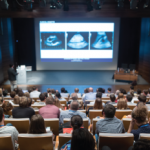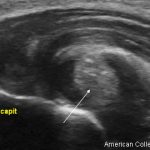TR: Why should rheumatologists consider taking a course with USSONAR?
EK: USSONAR was founded to create a venue for rheumatologists to learn musculoskeletal ultrasound, and it still serves this function today. One can learn most rapidly with frequent feedback over an extended period, and USSONAR provides this for the rheumatologist trying to learn musculoskeletal ultrasound.
It allows the participant in the training course to get feedback from rheumatologists seasoned in musculoskeletal ultrasound on studies submitted for review via the internet. Thus, rheumatologists without a local mentor can get feedback to help them improve their scanning over an eight-month span. Even rheumatologists with a local mentor would likely benefit from the program by getting feedback from a more diverse instructor pool, and perhaps more importantly, through a curriculum that includes numerous deadlines in the form of assignments, quizzes and examinations.
I think almost all of us learn better under the motivating pressure of a deadline.
TR: What is the RhMSUS and how does one obtain it?
JA: The Musculoskeletal Ultrasound Certification in Rheumatology (RhMSUS) is a certification offered by the ACR that “demonstrates competency in musculoskeletal ultrasound and promotes quality of care.” It’s a theoretical multiple choice exam that you sit for after completing a prerequisite amount of prescribed ultrasound scans, as well as a certain amount of CME or USSONAR training.
TR: Why is the RhMSUS valuable?
JA: The RhMSUS came on board because rheumatologists started using ultrasound and billing for it. There needed to be standards in place to make sure the tool is used appropriately and by people who know how to use it. At this time, there’s no governing body that says a rheumatologist can’t do this without certification or training, but as a community we realized this could become a problem, especially because billing is involved. In academic centers, one cannot apply for ultrasound credentials without proper certification. Insurance companies may follow suit, requiring formal credentials for reimbursement, and RhMSUS helps fill this need.
TR: How have you seen ultrasound grow in rheumatology over the years? How do you think it will continue to change practice in the future?
EK: Over the past 24 years, we have gone from one fellowship program offering ultrasound training to almost all programs offering at least some training. I expect that over the coming decades most rheumatologists will be able to use ultrasound, at least in a limited way, to help diagnose joint inflammation and guide needle placement. We are expanding beyond the world of musculoskeletal ultrasound into the world of rheumatology ultrasound as we use it for assessment of salivary glands, skin, temporal arteries and all the other tissues affected by rheumatic diseases.


